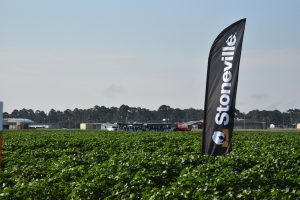***Post Updated with interview***
 BASF has added three new dicamba-tolerant Stoneville® cottonseed varieties to its ever-expanding cotton portfolio.
BASF has added three new dicamba-tolerant Stoneville® cottonseed varieties to its ever-expanding cotton portfolio.
“At BASF, we’re committed to providing growers with choice and innovation in the seed traits they’re using in their fields,” said Malin Westfall, Head of U.S. Cotton Business at BASF. “With the new line of Bollgard® 3 XtendFlex® cotton technology added into our Stoneville portfolio, the Bollgard II® XtendFlex varieties introduced in January and the strength of our existing traits, we are able to provide growers with a wealth of options to bring value back to their farms.”
Each of these new varieties is tolerant to Liberty,® Engenia® and glyphosate herbicides and brings three-gene lepidopteran resistance, which decreases the likelihood that an application for worm control will be needed. The new varieties include:
ST 4480B3XF
A new early- to mid-maturity variety for growers in Oklahoma, Kansas, all of West Texas, New Mexico and Arizona, ST 4480B3XF brings excellent performance on all kinds of acres. It features good seed size, storm tolerance and a very good fiber package.
ST 4990B3XF
Growers across the eastern Cotton Belt, East and South Texas, the Rolling Plains, Oklahoma, the Southern High Plains, New Mexico and Arizona who want hardy, early-season vigor can plant ST 4990B3XF with confidence. It’s a new early- to mid-maturity variety that’s very adaptable, with strong emergence and a good fiber package.
ST 5610B3XF
A new medium-full maturing Bollgard 3 XtendFlex variety that will fit non-irrigated and irrigated production areas across the eastern Cotton Belt, East and South Texas, the Rolling Plains, Oklahoma, the Southern High Plains, New Mexico and Arizona. ST 5610B3XF offers a high lint percentage, strong emergence, has a smooth leaf and is medium in plant height.
Listen to Malin talk about the new varieties in this interview: Interview with Malin Westfall, BASF
Westfall said BASF is preparing for the launch of the largest volume of cottonseed the company has ever seen as it enters into 2020. To learn more about these new varieties, talk with your local BASF representative.
